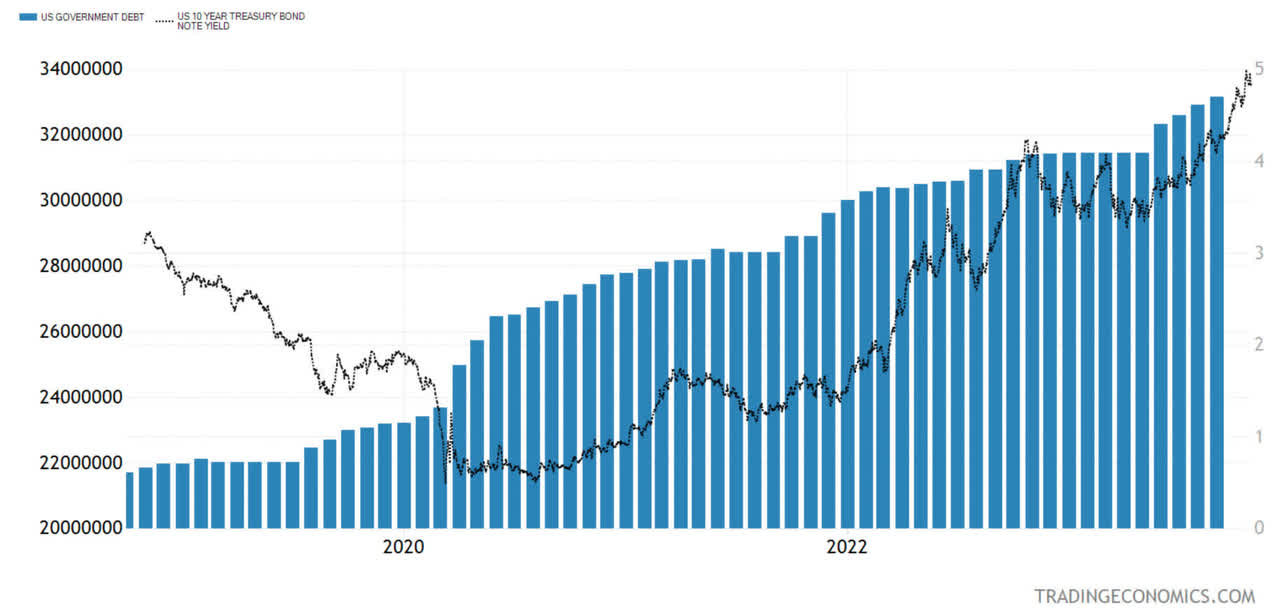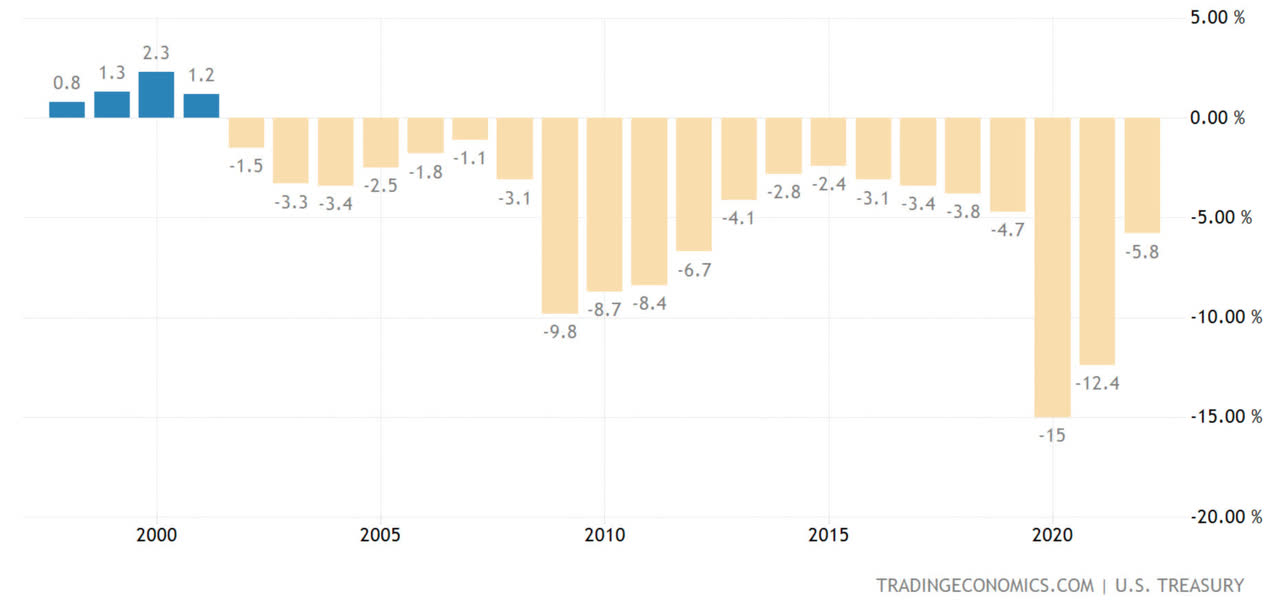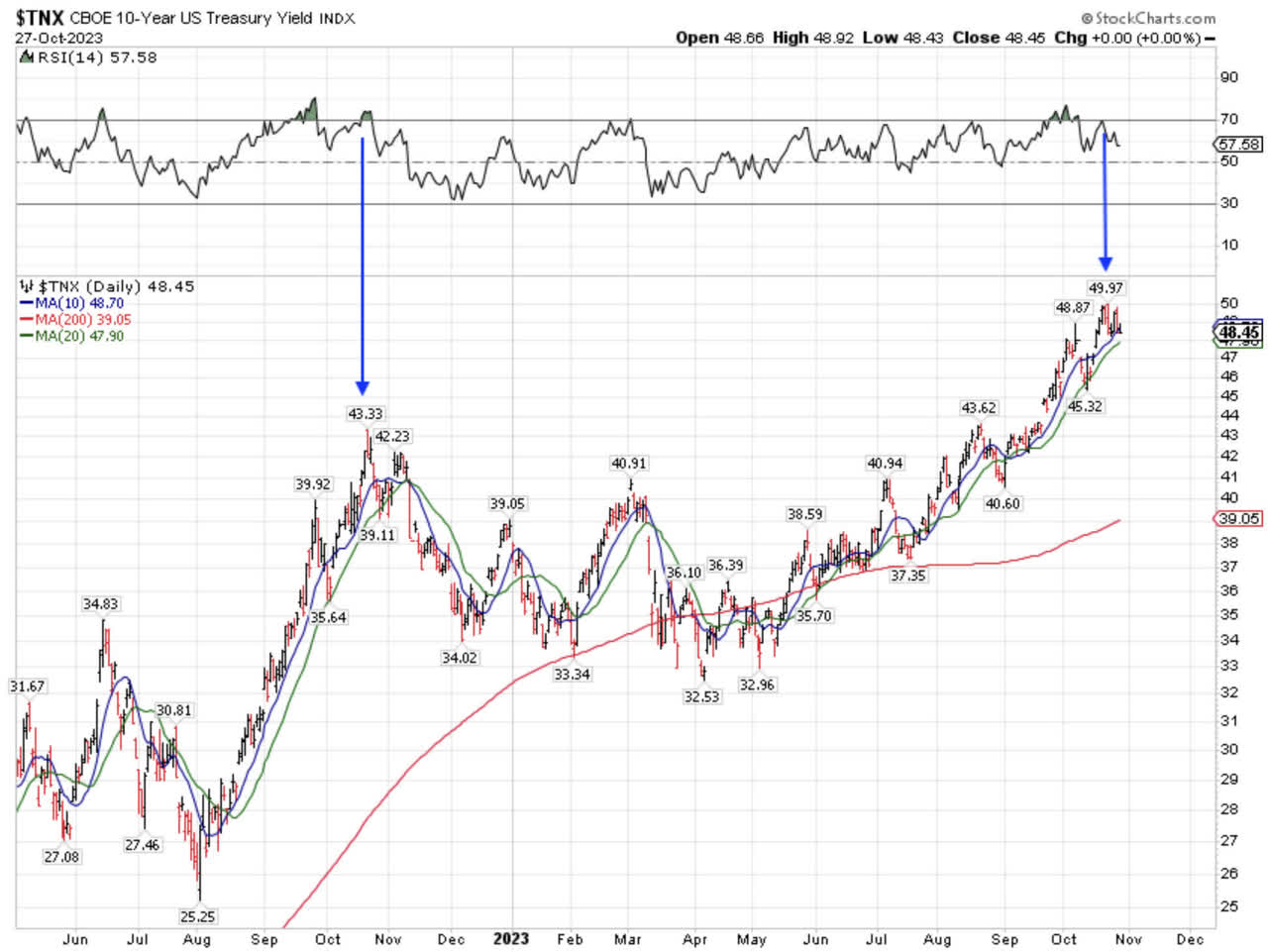Initial Signs Of A Treasury Yield Top
Summary
- By themselves, Treasury yields spiking out of control can cause a recession, and October delivered both a 5% yield on 10-year Treasury bonds and 8% fixed-rate mortgages.
- We have gotten into a situation where the avalanche of Treasury issuance (due to a last minute debt ceiling deal) is overwhelming investors.
- The U.S. Treasury had to issue more debt because they could not issue any debt before the debt ceiling deal.

Ralf Hahn
By themselves, Treasury yields spiking out of control can cause a recession, and October delivered both a 5% yield on 10-year Treasury bonds and 8% fixed-rate mortgages.
We have gotten into a situation where the avalanche of Treasury issuance (due to a last minute debt ceiling deal) is overwhelming investors.
The U.S. Treasury had to issue more debt because they could not issue any debt before the debt ceiling deal, and also because they have to issue more bonds at much higher interest rates to pay the coupons on the ones they had issued already. The situation is starting to look like an out-of-control debt spiral.
Graphs are for illustrative and discussion purposes only. Please read important disclosures at the end of this commentary.
On the chart above, you can see how quickly we went from $22 trillion in Treasury debt (in mid-2019) to over $33 trillion at the end of September 2023.
There were three notable bumps. In 2020, it was COVID spending (necessary to prevent the economy from entering a Second Great Depression), then it was the Biden Administration’s spending projects in 2021 and 2022.
Then, the last four rising columns on the right represent the turbo-charged issuance after the debt ceiling deal, coupled with surging interest rates.
Graphs are for illustrative and discussion purposes only. Please read important disclosures at the end of this commentary.
The Federal Deficit as a percent of U.S. GDP (Trading Economics, based on U.S. Treasury data
As I have stated here before, the deficit situation is not a Republican or Democratic problem, but a deeply entrenched national problem. All four Administrations since 2001 ran deficits, but with different excuses. My simple point is that I think we are running out of excuses.
Out of control spending that was supposed to help the economy recover will end up running it into the ground at a time when interest rates recently rose at a record pace.
Surging Treasury yields should be self-correcting, in theory; if they rise too fast, they can cause a recession, which by itself will push them lower, along with falling inflation. The reason this has not happened yet is because of the mountains of fixed-rate debt not yet affected by the yield spike.
For example, in the U.S. we have a huge base of fixed-rate mortgages. When interest rates rise, most mortgage payments stay constant. This is not the case in many developed markets in Europe, where a rise in interest rates pushes mortgage payments higher for everyone.
One could argue that the sensitivity towards rising interest rates is lower, although it also has its limits, which they are pushing, at the moment.
Graphs are for illustrative and discussion purposes only. Please read important disclosures at the end of this commentary.
With all this negative backdrop, the Treasury market is showing signs of exhaustion. An oscillator like the Relative Strength Index is starting to make lower highs, as we are making higher highs in yield, similar to October 2022.
All we need is a few weak economic releases or, worst case, the military situation in Israel deteriorating and the 10-year rate falling closer to 4%, faster than most would anticipate.
Some firms on Wall Street have estimated that the rise in Treasury yields since August is the equivalent of a 75 basis point Fed funds rate hike. If that is correct, the Fed is done hiking rates and needs to state so definitively, in order to stop the bond rout, but I am not holding my breath…
All content above represents the opinion of Ivan Martchev of Navellier & Associates, Inc.
Disclosure: *Navellier may hold securities in one or more investment strategies offered to its clients.
Disclaimer: Please click here for important disclosures located in the "About" section of the Navellier & Associates profile that accompany this article.
Editor's Note: The summary bullets for this article were chosen by Seeking Alpha editors.
Disclaimer: Investing carries risk. This is not financial advice. The above content should not be regarded as an offer, recommendation, or solicitation on acquiring or disposing of any financial products, any associated discussions, comments, or posts by author or other users should not be considered as such either. It is solely for general information purpose only, which does not consider your own investment objectives, financial situations or needs. TTM assumes no responsibility or warranty for the accuracy and completeness of the information, investors should do their own research and may seek professional advice before investing.
- zywho·2023-11-10To the moonLikeReport



